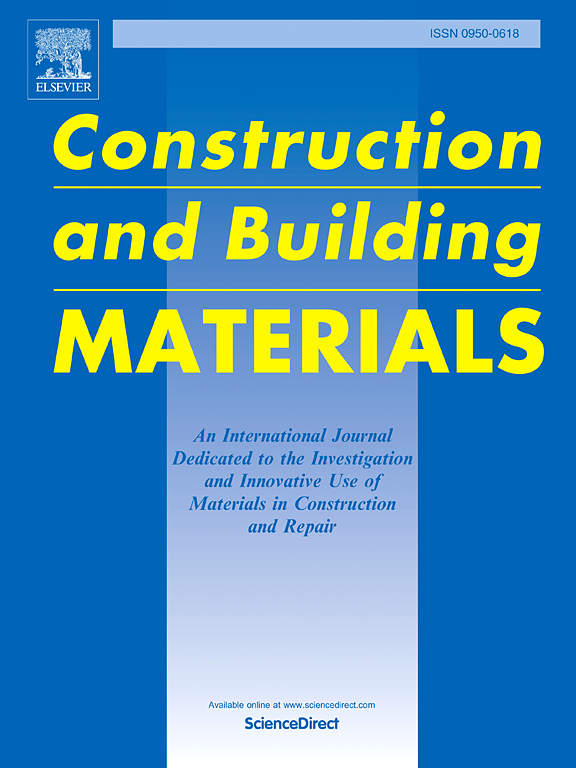Insights into the hydration kinetics and microstructural evolution of ultra-high performance cementitious composite at mid-to-low curing temperatures
IF 7.4
1区 工程技术
Q1 CONSTRUCTION & BUILDING TECHNOLOGY
引用次数: 0
Abstract
Strength insufficiency in ultra-high performance cementitious composites (UHPCC) during winter construction has attracted attention, yet the mechanisms underlying the impacts of mid-to-low temperatures on strength development remain unclear. This study systematically investigated the mechanisms underlying the early-age strength insufficiency of UHPCC within the temperature range of 5°C to 20°C. The effects of curing temperatures on hydration reactions, microstructural evolution, and mechanical strength were comprehensively analyzed. The results revealed that during the early hydration stage (0–3d), lower curing temperatures (5°C, 10°C) significantly reduced hydration reaction rates and the formation of hydration products, leading to lower matrix density and early strength compared to 20°C, demonstrating a pronounced thermodynamic response. With prolonged curing time (7–28d), lower temperatures, particularly at 5°C, facilitated the accumulation of hydration products and pore structure refinement, partially mitigating adverse effects of initial delays. Microscopic characterizations (SEM-EDS, TGA, FTIR, XRD) confirmed that low temperatures influenced the formation and transformation of critical hydration products such as C-(A)-S-H gel and Ca(OH)2, while potentially inducing nano- and microscale structural defects in the material matrix. Hydration kinetics analysis indicated that UHPCC hydration rates were highly sensitive to temperature, with a reduction to 5°C lowering reaction rates by approximately 58.9 %. These complex hydration behavior of UHPCC contribute to the nonlinear decline in the strength development as temperatures decrease, with strength losses reaching as high as 31.8 % at 10°C. The findings provide scientific insights and practical guidance for optimizing UHPCC performance in real-world low-temperature construction environments.
求助全文
约1分钟内获得全文
求助全文
来源期刊

Construction and Building Materials
工程技术-材料科学:综合
CiteScore
13.80
自引率
21.60%
发文量
3632
审稿时长
82 days
期刊介绍:
Construction and Building Materials offers an international platform for sharing innovative and original research and development in the realm of construction and building materials, along with their practical applications in new projects and repair practices. The journal publishes a diverse array of pioneering research and application papers, detailing laboratory investigations and, to a limited extent, numerical analyses or reports on full-scale projects. Multi-part papers are discouraged.
Additionally, Construction and Building Materials features comprehensive case studies and insightful review articles that contribute to new insights in the field. Our focus is on papers related to construction materials, excluding those on structural engineering, geotechnics, and unbound highway layers. Covered materials and technologies encompass cement, concrete reinforcement, bricks and mortars, additives, corrosion technology, ceramics, timber, steel, polymers, glass fibers, recycled materials, bamboo, rammed earth, non-conventional building materials, bituminous materials, and applications in railway materials.
 求助内容:
求助内容: 应助结果提醒方式:
应助结果提醒方式:


